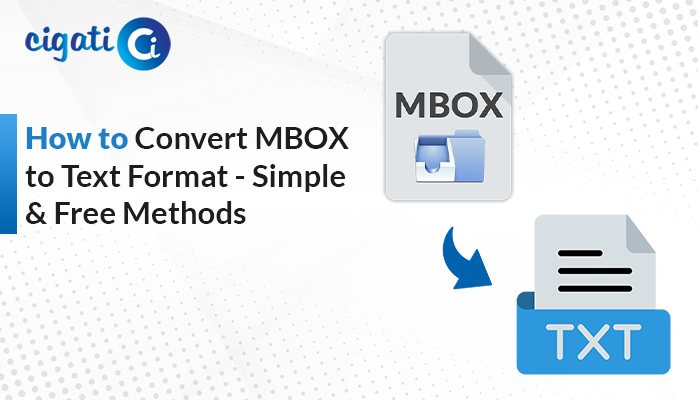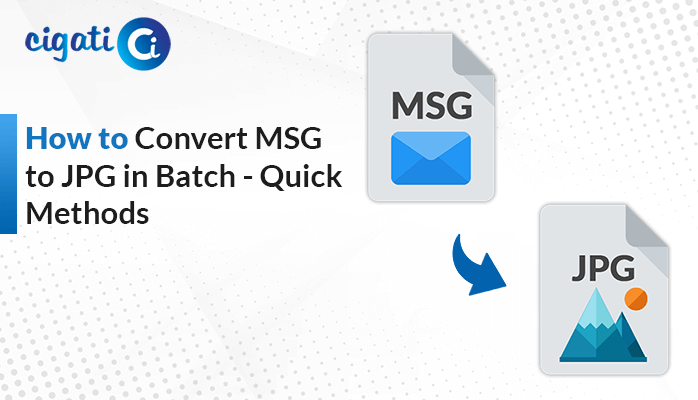-
Written By Rohit Singh
-
Updated on July 5th, 2024
Easy Solutions to Convert MBOX to PST for MS Outlook
The ability to seamlessly switch between email clients and platforms is essential in today’s digital world. Whether you change jobs, upgrade your email software, or simply looking to streamline your email management, converting MBOX to PST (Personal Storage Table) is a popular necessity. This guide will walk you through the entire process, step by step, so you can effortlessly convert your MBOX files to PST format.
MBOX is a flexible file format used by more than 20 email clients, including Power Mail, Apple Mail, Entourage, Mozilla Thunderbird, Eudora, etc., to store email messages. However, due to professional commitments, users want to access their MBOX mailboxes in MS Outlook. To access the MBOX files in Outlook, users need to convert them into PST file format. This blog will include reliable methods to convert Convert MBOX to PST file format.
Also Read: Open MBOX File in Outlook
Difference Between MBOX & PST Files
MBOX and PST are two distinct file formats used in email management, each with unique characteristics. Understanding the differences between MBOX and PST files is crucial while performing the migration process.
| Basis | MBOX | PST |
|---|---|---|
| Compatibility | Various email clients, including Thunderbird, Apple Mail, Eudora, and many others, support MBOX files. | PST files are exclusive to Microsoft Outlook, which means they can only use with this email client. |
| Structure | Each mailbox or folder in MBOX format is represented by a single file, making it relatively simple to manage and back up. | Unlike MBOX, PST files have a complex, structured format that includes email messages, calendars, contacts, and other mailbox items, all stored within a single file. |
| Type of File Format | MBOX files store emails in plain text format, making them human-readable and easy to troubleshoot if issues arise. | PST files use a proprietary format, making it challenging for third-party applications and email clients to access or import data from them. |
MBOX and PST files serve distinct purposes in the world of email management. While MBOX is known for its compatibility and simplicity, PST stands out with its complexity and exclusive use of Microsoft Outlook. Now, we will mention the best ways to Convert MBOX File to PST.
How to Convert MBOX to PST Manually?
Converting MBOX files to PST format might sound technical, but we’re here to guide you through it in the simplest way possible. We’ll break down three methods, including a user-friendly tool, so you can choose the one that suits you best.
Method 1: Export MBOX to PST Using Multiple Email Clients
This method involves a few steps but doesn’t require any special software. You’ll use different email clients to get the job done.
Step 1: Import Mailbox Data into Apple Mail
- Open Apple Mail on your computer.
- Go to File and choose Import Mailbox.
- Select the MBOX file (your source) and continue.
- Pick the MBOX files from the wizard and continue.
- Once it’s done, click Done.
Step 2: Create a New Mailbox using Eudora
- Add .mbox to the imported file.
- Move them to the Eudora directory (usually found at C: Documents and Settings user >> Application Data\Qualcomm\Eudora).
- Open Eudora and double-click the .mbx file.
- Close the Eudora application.
Step 3: Import a Newly Mailbox using Outlook Express
- Launch Outlook Express.
- Go to File >> Import >> Messages.
- Choose Eudora from the list and click Next.
- Locate the saved .mbox file and click OK.
- Follow the prompts to Finish.
Step 4: Move Mailbox from Outlook Express to Microsoft Outlook
- Run MS Outlook.
- Go to File >> Open & Export >> Import/Export.
- Select Import from another program or files and click Next.
- Choose Outlook Express 4.x, 5.x, 6.x, or Windows Mail and click Next.
- Locate the file to import/export and click Next.
- Click Finish to complete.
Method 2: Convert MBOX to PST Using Thunderbird
In this method, you’ll need Thunderbird and Outlook. Follow these steps:
Step 1: Save Thunderbird MBOX Emails as EML Files
- Open Thunderbird.
- Create a new folder.
- Select emails and save them as EML files.
- Open the folder where EML files are saved.
- Drag and drop EML files into Outlook.
Step 2: Convert MBOX (EML Files) to PST format
- In Outlook, go to File >> Open & Export >> Import/Export.
- Choose Export to a file and click Next.
- Select Outlook Data File (.pst) and click Next.
- Locate the folder with EML files and click Next.
- Set a location for the new PST file.
- Click Finish to complete.
Method 3: Expert Solution to Export MBOX Files to PST in Bulk
If the previous methods seem a bit complicated, there’s a simpler solution: the Cigati MBOX to PST Converter. This handy tool makes converting MBOX files to Outlook PST format a breeze. Plus, it keeps your data exactly as it is, so you don’t lose anything during the conversion. And guess what? You can try it out for free with its demo version.
Steps to Convert MBOX to PST:
- Download, install, and run the MBOX Converter tool.
- Choose Single File or Multiple Files/Folder options and click Next.
- Select the MBOX files.
- Preview the MBOX files.
- Choose Outlook PST as the saving format.
- Customize the settings as needed.
- Set the output folder path and click Convert.
- Your MBOX files are now in PST format.
Final Words
Converting MBOX to PST is a common task when switching email clients or managing email data. Whether you opt for the manual method or use dedicated conversion tools, always prioritize data integrity and security. With this comprehensive guide, you can now confidently convert MBOX to PST format, ensuring a smooth transition and easy access to your emails in Microsoft Outlook.
You May Also Read: Convert MBOX File to EML
About The Author:
Rohit Singh is an Email Backup, Recovery & Migration Consultant and is associated with Software Company from the last 3 years. He writes technical updates and their features related to MS Outlook, Exchange Server, Office 365, and many other Email Clients & Servers.
Related Post




